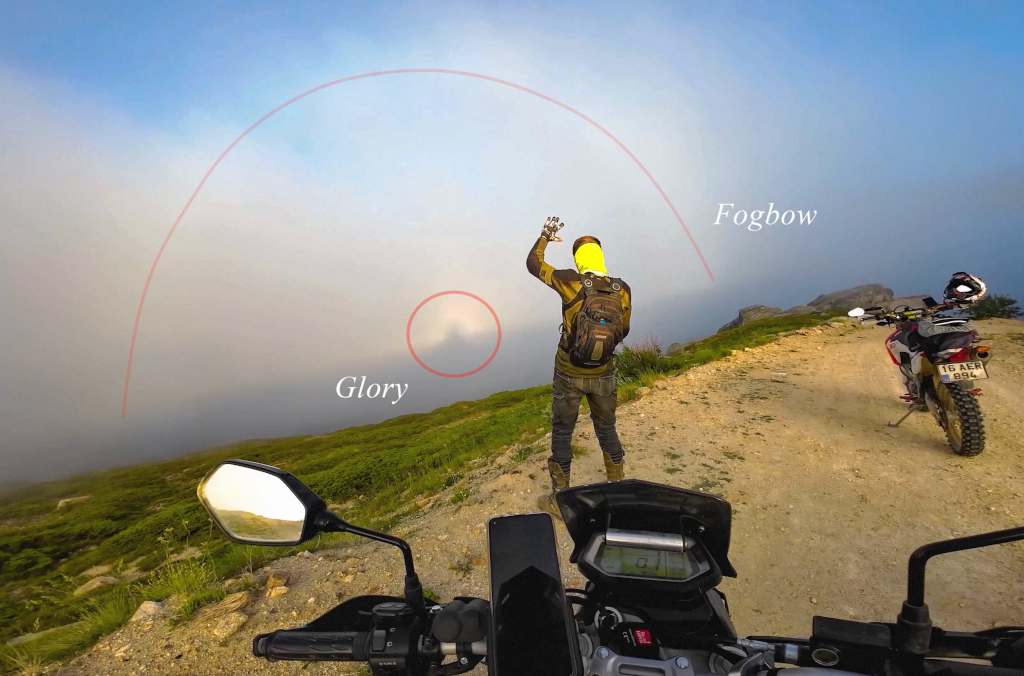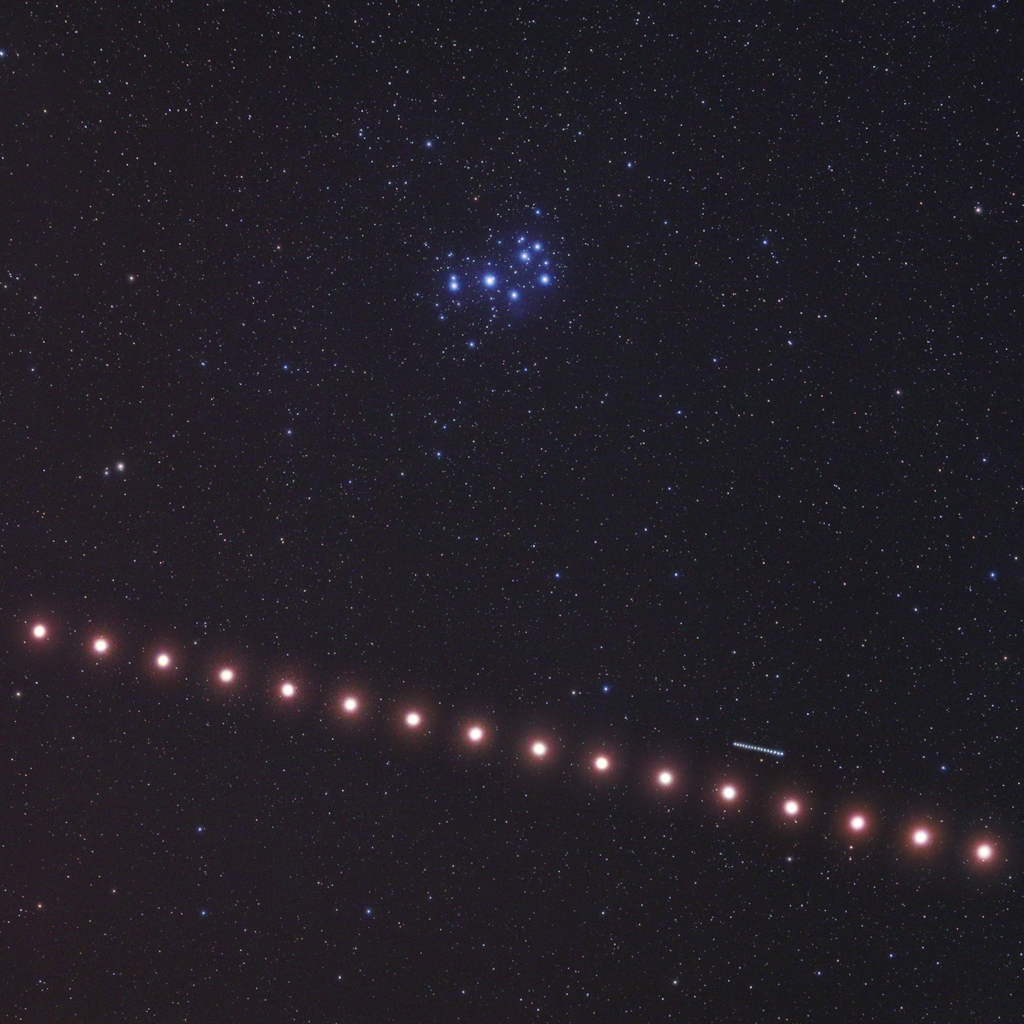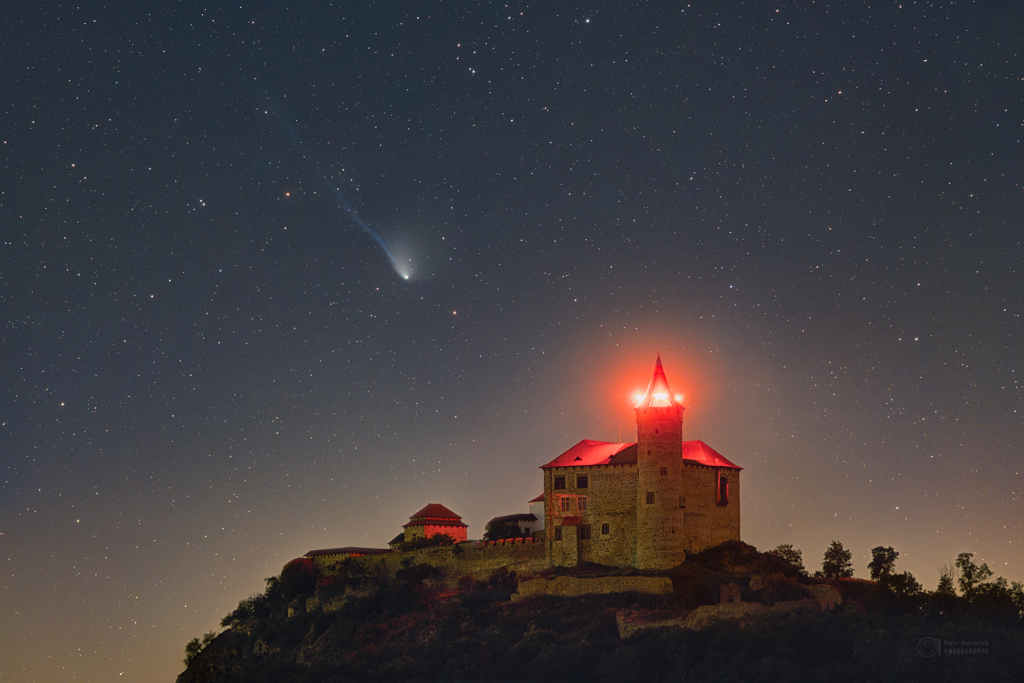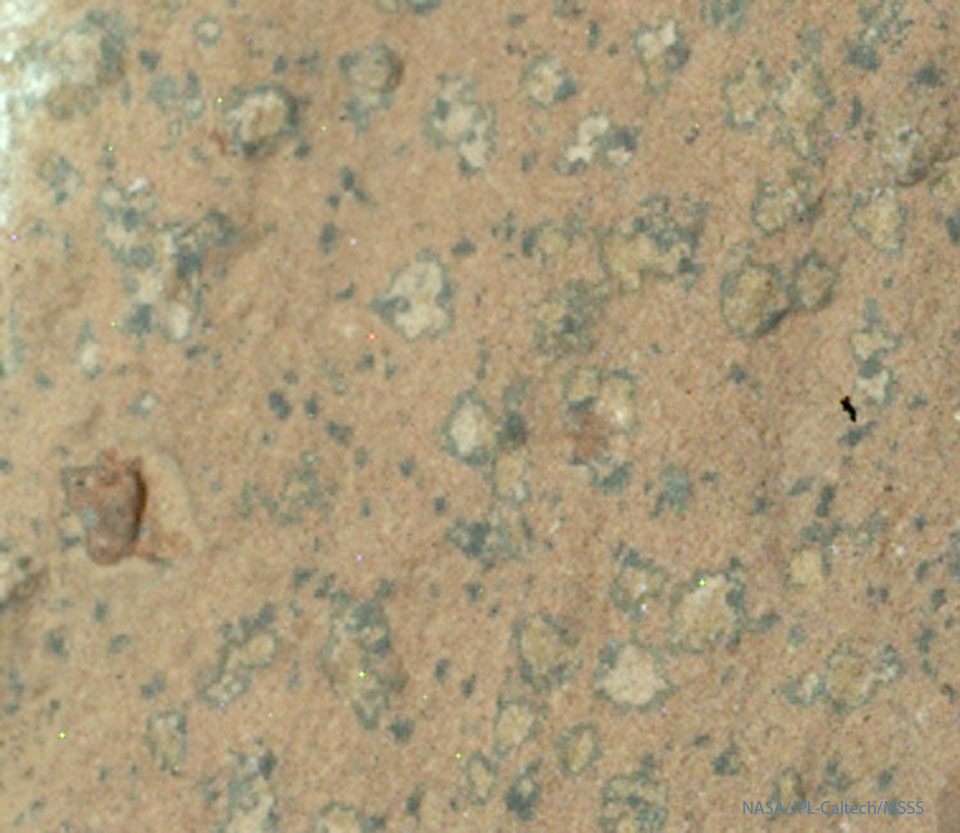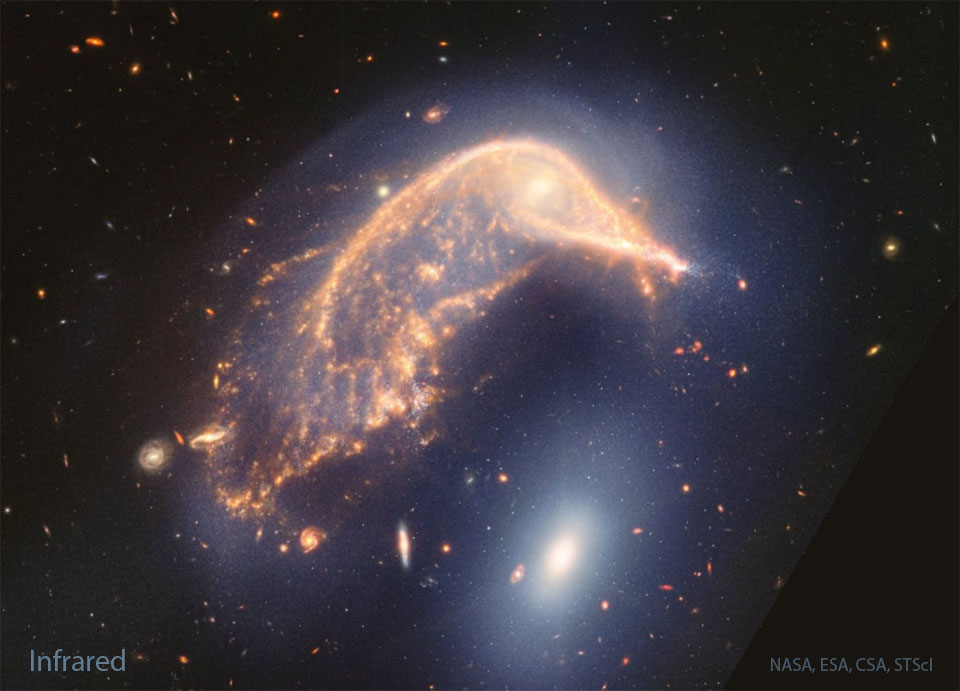Nombre total de pages vues
03/08/2024
ASTRONOMY - Glory and Fog Bow
2024 August 3
Image and Video Credit & Copyright: Cem Özkeser and Yasin İlcebay
Explanation: On a road trip up Mount Uludağ in Bursa province, Turkey these motorcyclists found themselves above low clouds and fog in late June. With the bright Sun directly behind them, the view down the side of the great mountain revealed a beautiful, atmospheric glory and fog bow. Known to some as the heiligenschein or the Specter of the Brocken, a glory can also sometimes be seen from airplanes or even high buildings. It often appears to be a dark giant surrounded by a bright halo. Of course the dark giant is just the shadow of the observer (90MB video) cast opposite the Sun. The clouds and fog are composed of very small water droplets, smaller than rain drops, that refract and reflect sunlight to create the glory's colorful halo and this more extensive fog bow.
02/08/2024
SANTé/MEDECINE - Savoir lire les résultats d'une prise de sang - (1 - c) - L'hématologie - (1-c) - L'anémie
ASTRONOMY - Mars Passing By
2024 August 2
Image Credit & Copyright: Tunc Tezel (TWAN)
Explanation: As Mars wanders through Earth's night, it passes about 5 degrees south of the Pleiades star cluster in this composite astrophoto. The skyview was constructed from a series of images captured over a run of 16 consecutive clear nights beginning on July 12. Mars' march across the field of view begins at the far right, the planet's ruddy hue. showing a nice contrast with the blue Pleiades stars. Moving much faster across the sky against the distant stars, the fourth planet from the Sun easily passes seventh planet Uranus, also moving across this field of view. Red planet Mars and the ice giant world were in close conjunction, about 1/2 degree apart, on July 16. Continuing its rapid eastward trek, Mars has now left the sister stars and outer planet behind though, passing north of red giant star Aldebaran. Mars will come within about 1/3 degree of Jupiter in planet Earth's sky on August 14.
01/08/2024
INVENTIONS DE DEMAIN - Il y a de l'hydroélectricité dans l'air !
ASTRONOMY - Comet Olbers over Kunetice Castle
2024 August 1
Image Credit & Copyright: Petr Horálek / Institute of Physics in Opava
Explanation: A visitor to the inner solar system every 70 years or so Comet 13P/Olbers reached its most recent perihelion, or closest approach to the Sun, on June 30 2024. Now on a return voyage to the distant Oort cloud the Halley-type comet is recorded here sweeping through northern summer night skies over historic Kunetice Castle, Czech Republic. Along with a broad dust tail, and brighter coma, this comet's long ion tail buffeted by storms and winds from the Sun, is revealed in the composite of tracked exposures for comet and sky, and fixed exposures for foreground landscape recorded on July 28. The comet is about 16 light-minutes beyond the castle and seen against faint background stars below the northern constellation Ursa Major. The hilltop castle dates to the 15th century, while Heinrich Olbers discovered the comet in 1815. Captured here low in northwestern skies just after sunset Comet Olbers, for now, offers skywatchers on planet Earth rewarding telescopic and binocular views. Comet 13P/Olbers next perihelion passage will be in 2094.
31/07/2024
ASTRONOMY - Leopard Spots on Martian Rocks
2024 July 31
Image Credit: NASA, JPL-Caltech, MSSS, Perseverance Rover
Explanation: What is creating these unusual spots? Light-colored spots on Martian rocks, each surrounded by a dark border, were discovered earlier this month by NASA's Perseverance Rover currently exploring Mars. Dubbed leopard spots because of their seemingly similarity to markings on famous Earth-bound predators, these curious patterns are being studied with the possibility they were created by ancient Martian life. The pictured spots measure only millimeters across and were discovered on a larger rock named Cheyava Falls. The exciting but unproven speculation is that long ago, microbes generated energy with chemical reactions that turned rock from red to white while leaving a dark ring, like some similarly appearing spots on Earth rocks. Although other non-biological explanations may ultimately prevail, speculation focusing on this potential biological origin is causing much intrigue.
SANTé/MEDECINE - Savoir lire les résultats d'une prise de sang - (1 - b) - Les hématies - En cas d'anomalie
30/07/2024
SANTé/MEDECINE - Savoir lire les résultats d'une prise de sang - (1 - a) - Les hématies
ASTRONOMY - Arp 142: Interacting Galaxies from Webb
2024 July 30
Image Credit: NASA, ESA, CSA, STScI; Hubble Rollover Reprocessing & Copyright: Raul Villaverde
Explanation: To some, it looks like a penguin. But to people who study the universe, it is an interesting example of two big galaxies interacting. Just a few hundred million years ago, the upper NGC 2936 was likely a normal spiral galaxy: spinning, creating stars, and minding its own business. Then it got too close to the massive elliptical galaxy NGC 2937, below, and took a dive. Together known as Arp 142, they are featured in this new Webb infrared image, while a visible light Hubble image appears in comparison. NGC 2936 is not only being deflected, but distorted, by this close gravitational interaction. When massive galaxies pass near each other, gas is typically condensed from which new stars form. A young group of stars appears as the nose of the penguin toward the right of the upper galaxy, while in the center of the spiral, bright stars together appear as an eye. Before a billion years, the two galaxies will likely merge into one larger galaxy.
ASTRONOMY - Andromeda and Sprites over Australia
2025 December 16 Andromeda and Sprites over Australia Image Credit & Copyright: JJ Rao Explanation: What’s happening over that tree? ...
-
2022 September 26 All the Water on Planet Earth Illustration Credit: Jack Cook, Adam Nieman, Woods Hole Oceanographic Institution ; Data ...
-
2025 May 11 The Surface of Venus from Venera 14 Image Credit: Soviet Planetary Exploration Program , Venera 14 ; Processing & Copyri...
